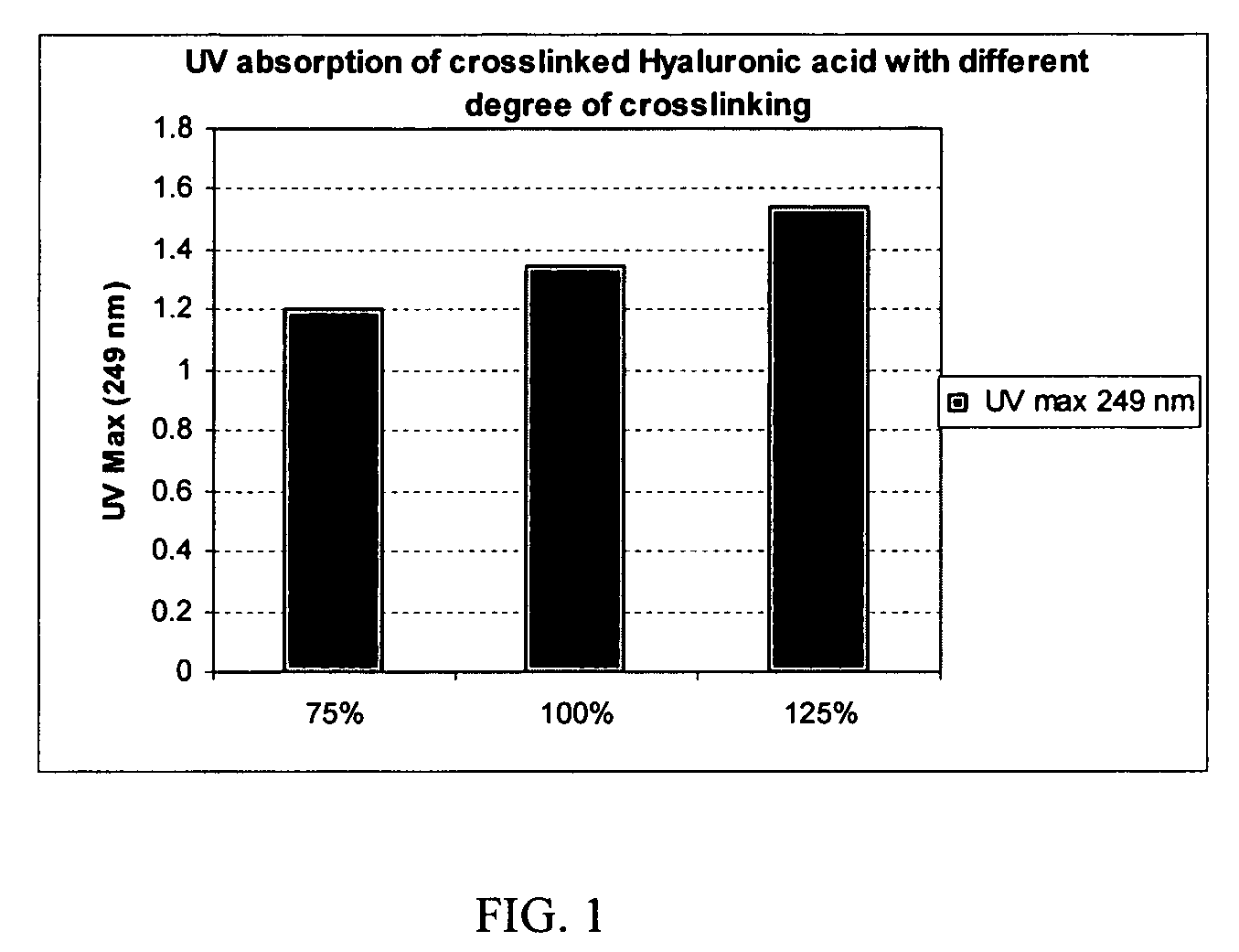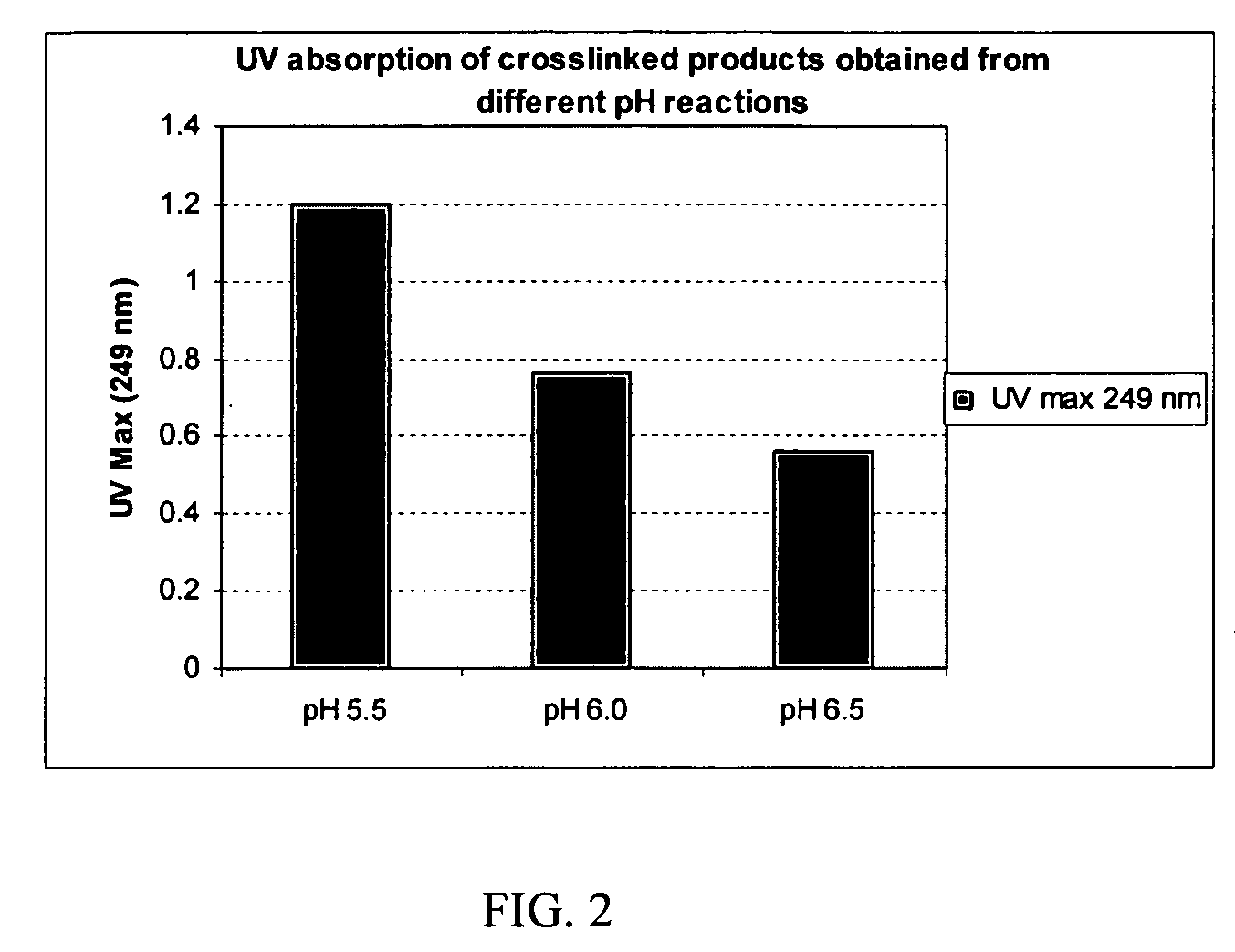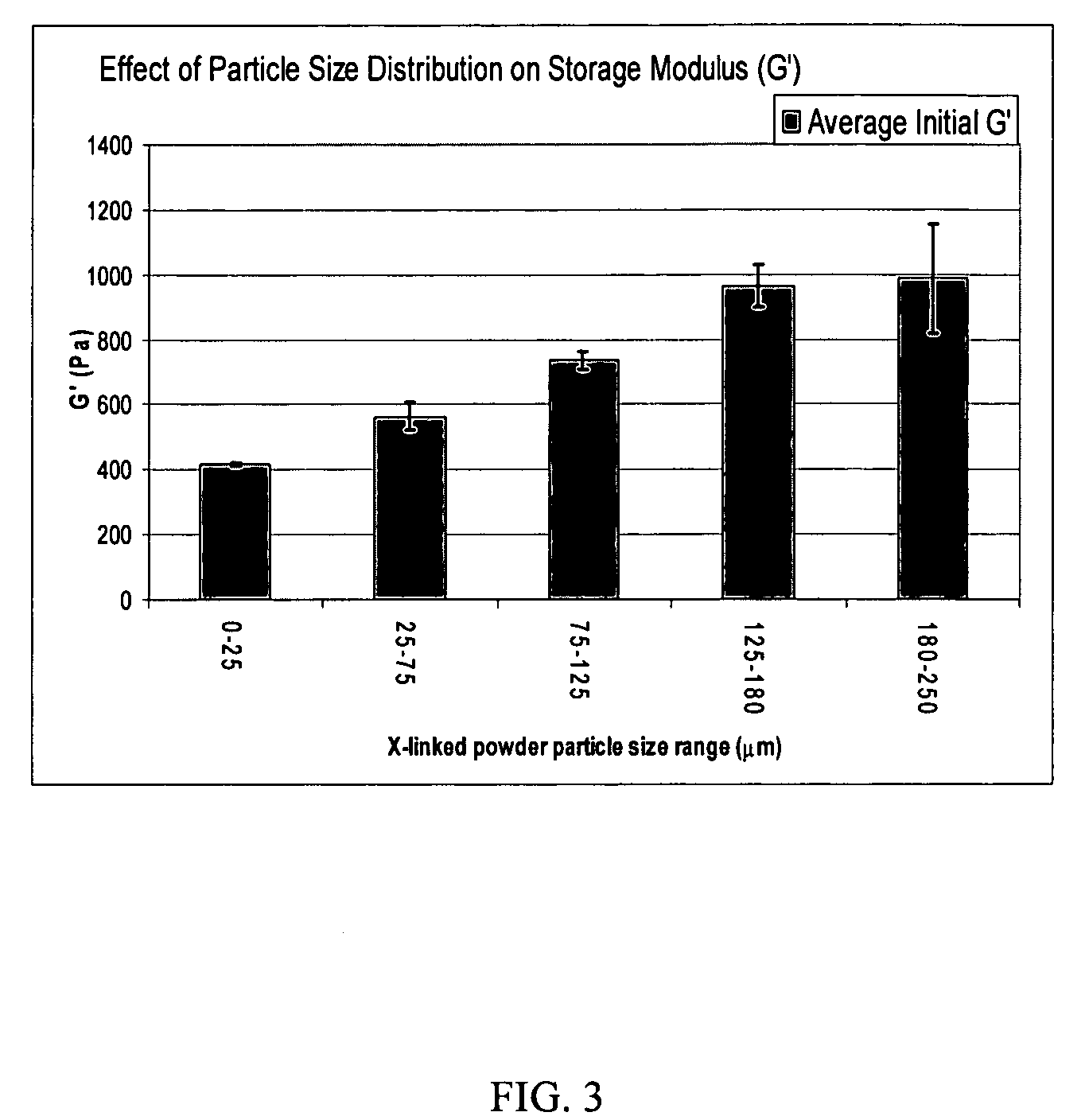Crosslinked hyaluronic acid compositions for tissue augmentation
- Summary
- Abstract
- Description
- Claims
- Application Information
AI Technical Summary
Benefits of technology
Problems solved by technology
Method used
Image
Examples
example 10
Degree of Crosslinking Increases with Increasing Molar Ratio of the Crosslinker
[0082] Crosslinking of hyaluronic acid with p-phenylene-bis(ethylcarbodiimide) incorporates the phenylene UV chromophore into the crosslinked product. By measuring the UV absorbance of the crosslinked product, the amount of the UV chromophore and degree of crosslinks incorporating the biscarbodiimide-derived linker can be quantified.
[0083] To make a 0.1-mg / mL solution, a weighed amount (1-10 mg) of each of the crosslinked products of Examples 5, 8 and 9 was separately dissolved in a sufficient amount of 5% sulfuric acid solution by heating at 70-75° C. for 4 h in a sealed container. Each solution was diluted with 5% sulfuric acid to make a 0.1-mg / mL solution of each product. The UV absorbance (UV Max) of these solutions measured at 249 nm is shown in FIG. 1 as a function of the biscarbodiimide:HA molar equivalent ratio in %. Thus, a correlation can be seen between the degree of crosslinking incorporatin...
example 11
Degree of Crosslinking can be Controlled by pH
[0084] To make a 0.1-mg / mL solution, a weighed amount (1-10 mg) of each of the crosslinked products of Examples 5, 6 and 7 was separately dissolved in a sufficient amount of 5% sulfuric acid solution by heating at 70-75° C. for 4 hour in a sealed container and then allowing to stand for 16 hours at room temperature. These solutions were each diluted with 5% sulfuric acid to make a 0.1 -mg / mL solution of each product. The UV absorbance of these solutions measured at 249 nm is shown in FIG. 2.
[0085] It can be seen that the degree of crosslinking incorporating the biscarbodiimide-derived linker is greatest at pH 5.5 (the composition of Example 5), which is greater than that at pH 6.0 (the composition of Example 6), which are both greater than that at pH 6.5 (the composition of Example 7).
example 12
Preparation of a Gel From Dehydrated Crosslinked HA
[0086] A portion of the dry crosslinked HA precipitate of Example 5 was milled in a cryogenic mill. The powder was suspended in dimethyl sulfoxide (DMSO) and the suspension was stirred for 4-10 hours. The suspension was centrifuged and the DMSO was removed. The water-insoluble crosslinked HA was re-suspended in ethanol, stirred for a few hours, and the ethanol was removed (the ethanol washing can be repeated if desired). After removing the ethanol, the solid was collected and dried under vacuum. The dried powder of the crosslinked HA was suspended in Phosphate Buffer 4 to make a 30-mg / mL suspension in the form of a slurry or paste. The osmolarity of the suspension was adjusted to 280-340 mOsm (milliosmol) by adding NaCl and loaded into a syringe. The syringe was autoclaved at 120° C. at a pressure of about 138 kPa (kilopascal) (20-lb / in2) for 25 minutes and cooled after sterilization with chilled water.
PUM
| Property | Measurement | Unit |
|---|---|---|
| Temperature | aaaaa | aaaaa |
| Temperature | aaaaa | aaaaa |
| Length | aaaaa | aaaaa |
Abstract
Description
Claims
Application Information
 Login to View More
Login to View More - R&D
- Intellectual Property
- Life Sciences
- Materials
- Tech Scout
- Unparalleled Data Quality
- Higher Quality Content
- 60% Fewer Hallucinations
Browse by: Latest US Patents, China's latest patents, Technical Efficacy Thesaurus, Application Domain, Technology Topic, Popular Technical Reports.
© 2025 PatSnap. All rights reserved.Legal|Privacy policy|Modern Slavery Act Transparency Statement|Sitemap|About US| Contact US: help@patsnap.com



